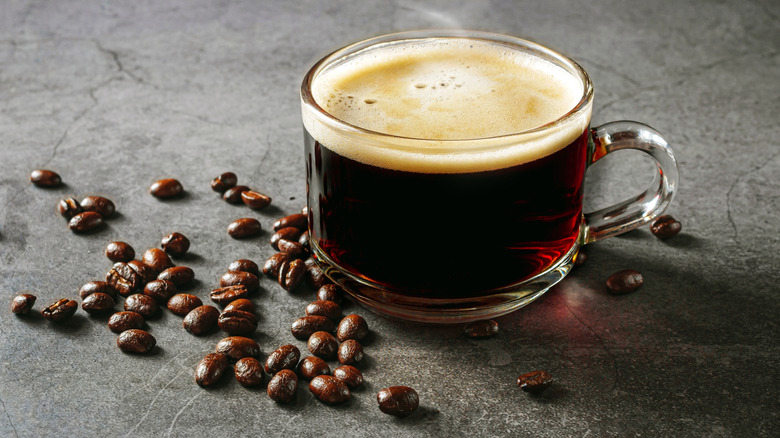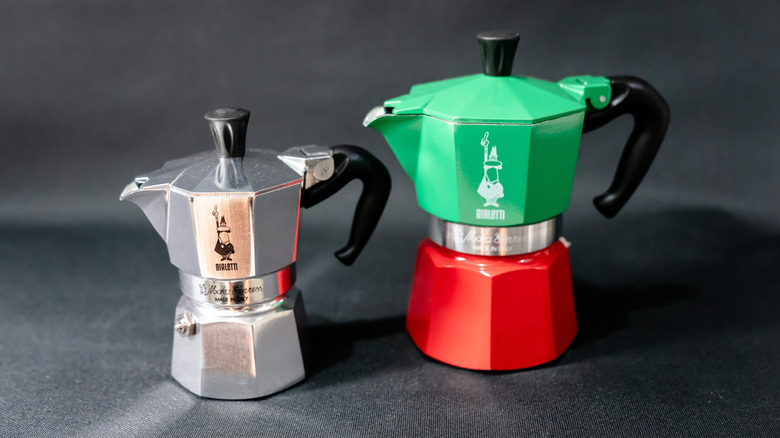The Reliable Retro Coffee Maker That's A Fraction Of Nespresso's Price (And It Saves Space)
We may receive a commission on purchases made from links.
Nespresso and other pod-based coffee makers have replaced traditional drip brewers in many homes, favored for their convenience and quick brew time. Some brands also use a similar pod system for espresso. But coffee lovers can turn to a low-tech, retro method instead that's easy, speedy, and significantly cheaper by using a Moka pot to make espresso. Not only do they cost significantly less than Nespresso machines, stovetop Mokas don't take up the kind of counter space they do.
The iconic espresso pot that Italian maker Bialetti calls Moka Express works by harnessing steam pressure. When the water in the bottom boiler section is heated, the pressure pushes it up through a funnel containing coffee grounds. The espresso this produces continues up into the top collector, which has a lid and a spout. Reviews consistently note that it produces a good cup of coffee, that it's easy to use, and very simple to clean. However, many users have noted that you need a decent grinder to get an even size (though, as with anything, others have said it's not really vital to get a decent cup of coffee), and that the Moka produces a strong, rich cup of Joe. Just keep in mind that it should never be put in the dishwasher, one of the pot's cleaning and care guidelines.
Mokas are measured in espresso cups, and come in eight sizes from a two-ounce one-cup size up to 18 cups. The three-cup Moka Express costs $39.19 on Amazon, while the cheapest Nespresso machine, the Vertuo Pop+, is $129.
History of the Moka Express
The Moka Express was invented in Italy in 1933 based on an idea by Alfredo Bialetti, who owned a business that made aluminum products. He was inspired by his wife's washing machine, which worked by heating a steel tub of soapy water with a sealed top and a tube through it over a fire. The pressure would push the water up through the tube onto the laundry. Luigi De Ponti created the design for Bialetti, which was named for the city of Mokha in Yemen, a well-known coffee production center.
Italians previously made coffee with methods that used gravity, like the traditional coffee pot from Naples. The Moka's steam pressure technique lets them make espresso at home that is more like the kind at cafés and restaurants. It was Alfredo's son Renato, however, who took over after World War II and made the Moka globally famous, including in Cuba, where it's used everywhere to make Cuban coffee (which is different from typical espresso). Bialetti's famous logo of a moustached man pointing in the air that's on every Moka pot was created in 1953 based on Renato.
The Moka's eight-sided design, which a Bilaetti representative told the New York Times was inspired by art deco and women's skirts at the time, has been exhibited at museums including New York's Museum of Modern Art and the Smithsonian Cooper-Hewitt National Design Museum. Bialetti has more recently collaborated on designs for decorated Moka pots, including with Dolce & Gabbana, MacKenzie Childs, and The North Face, and the shows "Stranger Things," "Squid Game," and "Bridgerton."


